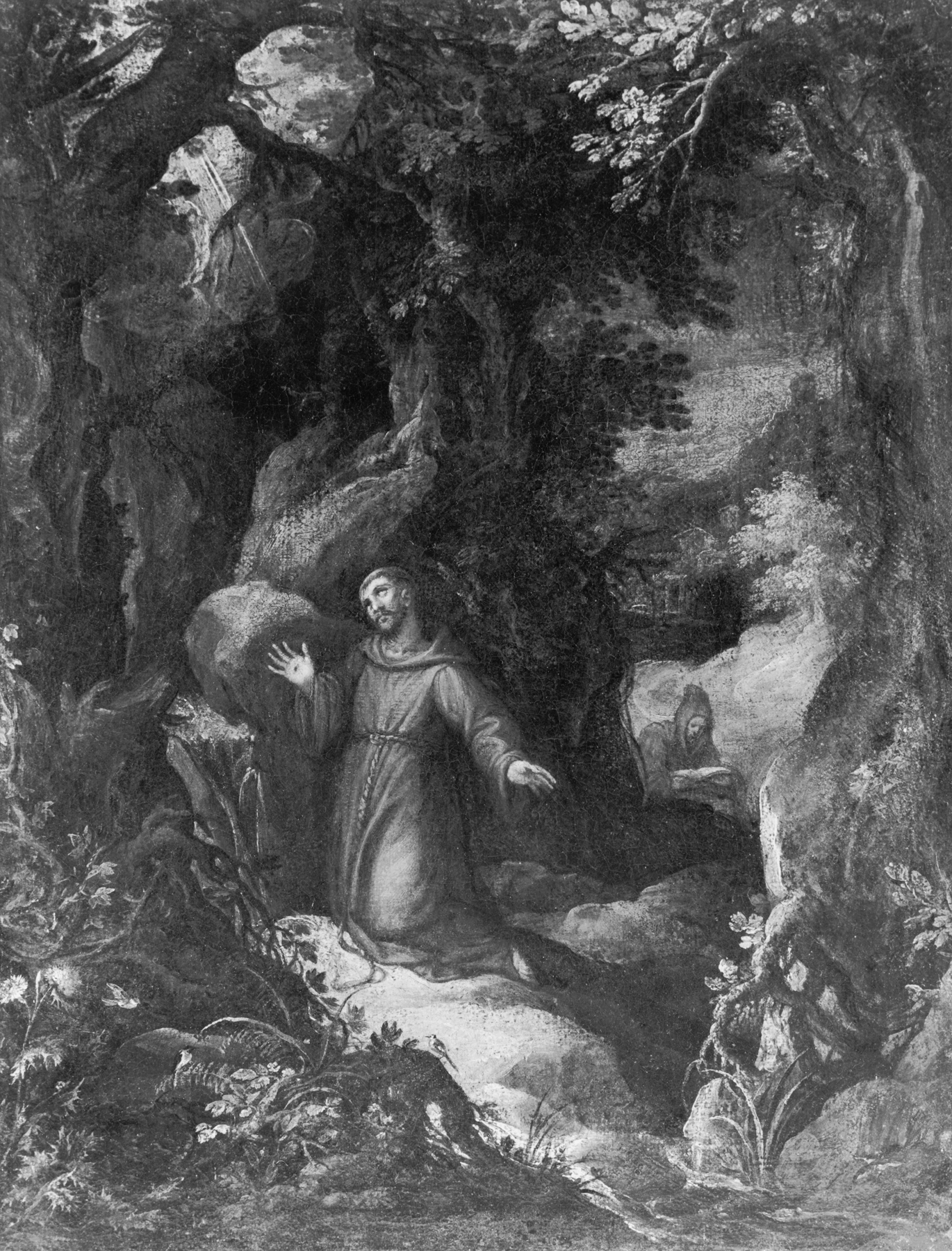Saint Francis of Assisi Receiving the Stigmata
(Baroque Europe )
In 1224, as St. Francis (1181-1226) and a follower Brother Leo were meditating on Christ's suffering during a forty day fast spent in the wilderness of Mount Verna, Francis had a vision of a seraph (a six-winged angel) crucified like Christ. Immediately, there appeared on Francis's body the stigmata, visible marks of the wounds of the crucified Christ that he carried to his grave, thus a physical manifestation of his desire to imitate Christ in his dedication of himself to the poor and suffering.
Bril trained as a landscapist in Antwerp but had a successful career in Rome. The composition and deep brownish-green tones suggest his manner around 1620, but the execution lacks his clarity, and the natural detail in the lower left is more prominent than in his accepted works. This is the work of a talented pupil or imitator.
Provenance
Provenance (from the French provenir, 'to come from/forth') is the chronology of the ownership, custody, or location of a historical object. Learn more about provenance at the Walters.
Don Marcello Massarenti Collection, Rome [date and mode of acquisition unknown]; Henry Walters, Baltimore, 1902, by purchase; Walters Art Museum, 1931, by bequest.
Conservation
| Date | Description | Narrative |
|---|---|---|
| 12/2/1971 | Examination | examined for condition |
Geographies
Italy, Rome (Place of Origin)
Measurements
H: 15 7/16 x W: 12 1/4 in. (39.2 x 31.1 cm)
Credit Line
Acquired by Henry Walters with the Massarenti Collection, 1902
Location in Museum
Accession Number
In libraries, galleries, museums, and archives, an accession number is a unique identifier assigned to each object in the collection.
In libraries, galleries, museums, and archives, an accession number is a unique identifier assigned to each object in the collection.
37.783


